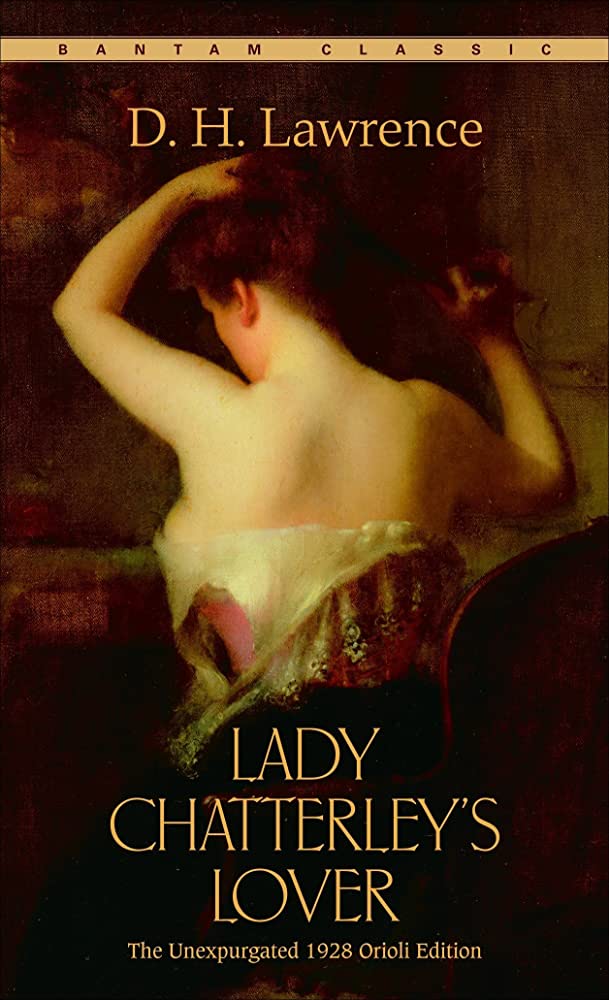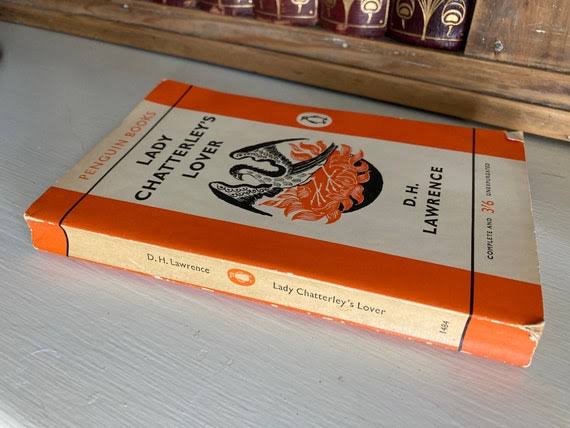Lady Chatterley’s Lover is a controversial novel written by D.H. Lawrence. It was banned in several countries due to its explicit content. However, the novel is also regarded as a masterpiece of literature for its exploration of human relationships and sexuality. In this review, we will delve into the various aspects of the novel, including its characters, plot, themes, and why it remains relevant today.
Table of contents
Introduction
Lady Chatterley’s Lover was first published privately in Italy in 1928, and it was not until 1960 that the novel was published in the United Kingdom after a high-profile obscenity trial. The novel is a complex exploration of the relationship between Lady Constance Chatterley and her husband, Sir Clifford Chatterley, as well as her lover, Oliver Mellors. The novel is set in England in the early 20th century and reflects the changing social and political landscape of the time.
Characters
The Lady Chatterley’s Lover has several main characters, and their relationships are central to the plot. Here is a table of the main characters:
| Character | Description |
|---|---|
| Lady Constance Chatterley | A young woman who is dissatisfied with her life and her marriage to Sir Clifford Chatterley. She embarks on an affair with Mellors that changes her life and helps her discover her true self. |
| Sir Clifford Chatterley | Lady Constance’s husband, a wealthy and intellectual aristocrat who is paralyzed from the waist down due to a war injury. He represents the rigid and unfeeling nature of the aristocracy. |
| Oliver Mellors | The gamekeeper on Sir Clifford’s estate, and he is a rugged and passionate man who has a complicated past. He is the love interest and eventual partner of Lady Constance. |
| Mrs. Bolton | The housekeeper of Lady Constance. She is a loyal servant who supports Lady Constance throughout her struggles. |
| Michaelis | A writer who is a friend of Lady Constance. He is a sympathetic and understanding character who supports Lady Constance during her marriage crisis. |
| Hilda Reid | Sir Clifford’s sister who is bitter and resentful towards Lady Constance. |
| Tommy Dukes | Sir Clifford’s intellectual friend who supports him in his views on society and intellectualism. |
| Duncan Forbes | A doctor who is critical of Sir Clifford’s views on society and modernity. |
Character analysis
Lady Constance Chatterley is a complex character who is trapped in a loveless marriage. She is initially presented as a reserved and dutiful wife, but her affair with Mellors allows her to explore her sexuality and embrace her desires. Sir Clifford is an intellectual who is paralyzed from the waist down due to a war injury, and he represents the rigid and unfeeling nature of the aristocracy. Oliver Mellors is the gamekeeper on Sir Clifford’s estate, and he is a rugged and passionate man who has a complicated past. Mrs. Bolton is the housekeeper of Lady Constance, and Michaelis is a writer who is a friend of Lady Constance.
Lawrence’s characters are deeply flawed and human, and they represent the conflicting forces of love, desire, and societal expectations. Lady Constance’s journey towards self-discovery and sexual liberation is contrasted with Sir Clifford’s intellectual rigidity and Mellors’ rough, passionate nature.
Plot
The plot of “Lady Chatterley’s Lover” is centered around Lady Constance’s affair with Mellors and the societal and personal consequences that follow. The novel begins with Lady Constance’s marriage to Sir Clifford and the subsequent breakdown of their relationship due to his injury and her growing discontent with her life. Lady Constance then begins her affair with Mellors, which is initially physical but later evolves into a deeper emotional connection.
Throughout the novel, the characters struggle with their desires and societal expectations, and the novel ultimately ends with Lady Constance’s decision to leave her husband and live with Mellors. The novel is a powerful commentary on the changing social and political landscape of the time, as well as the human experience of love and desire.
Important parts
There are several important moments in “Lady Chatterley’s Lover” that highlight the themes of the novel. One of the most memorable moments is when Lady Constance first meets Mellors and is struck by his rough and passionate nature. This moment represents the beginning of her journey towards sexual liberation and self-discovery.
Another important moment is when Lady Constance and Mellors consummate their relationship in the woods, which is a powerful and explicit scene that explores the nature of human desire and sexuality. Finally, the ending of the novel, where Lady Constance decides to leave her husband and live with Mellors, is a powerful statement on the importance of personal fulfillment and happiness.
Romance and intimacy
Lady Chatterley’s Lover is a deeply romantic and intimate novel that explores the complexities of human relationships and desire. The relationship between Lady Constance and Mellors is passionate and intense, and their physical and emotional connection is central to the novel. Lawrence’s prose is vivid and sensual, and he uses the natural world to heighten the sense of intimacy between the characters.
However, the novel is also controversial for its explicit descriptions of sex and sexuality, and it has been criticized for its portrayal of women as objects of male desire. Despite this, “Lady Chatterley’s Lover” remains a powerful exploration of human intimacy and the complexities of desire.

Humanity in “Lady Chatterley’s Lover”
At its core, Lady Chatterley’s Lover is a novel about the human experience of love, desire, and fulfillment. Lawrence’s characters are deeply flawed and complex, and their struggles with societal expectations and personal desires represent the universal human experience. The novel explores the changing social and political landscape of the early 20th century, and it remains relevant today as a powerful commentary on the human condition.
Who can read and why you should or should not read the novel
Lady Chatterley’s Lover is a novel that is not suitable for children due to its explicit content. However, for mature readers, the novel is a powerful exploration of human relationships and sexuality. The novel is a classic of literature, and it remains relevant today as a powerful statement on the human experience.
Readers who are interested in exploring the complexities of human relationships and desire should read Lady Chatterley’s Lover. However, readers who are uncomfortable with explicit descriptions of sex and sexuality may want to avoid the novel.
Why the novel is famous
Lady Chatterley’s Lover is famous for several reasons. Firstly, it was initially banned in many countries due to its explicit content, which made it a controversial novel. The novel was the subject of several high-profile trials, including the famous obscenity trial in 1960, which ultimately led to the lifting of the ban on the novel in the UK.
Secondly, Lady Chatterley’s Lover is a powerful exploration of human relationships and sexuality, and it remains relevant today as a statement on the human experience. The novel has been praised for its vivid and sensual prose, as well as its nuanced portrayal of complex human emotions and desires.
Finally, Lady Chatterley’s Lover is an important work of literature that has had a significant impact on the literary canon. The novel has been translated into many languages and has been read and studied by generations of readers and scholars.
Final remarks
Lady Chatterley’s Lover is a powerful and important novel that explores the complexities of human relationships and desire. The novel is a classic of literature, and it remains relevant today as a statement on the human experience. While the novel may not be suitable for all readers due to its explicit content, mature readers who are interested in exploring the complexities of human sexuality and relationships should consider reading Lady Chatterley’s Lover. Overall, the novel is a powerful and provocative work of literature that continues to captivate readers and inspire debate and discussion.



 For all latest articles, follow on Google News
For all latest articles, follow on Google News